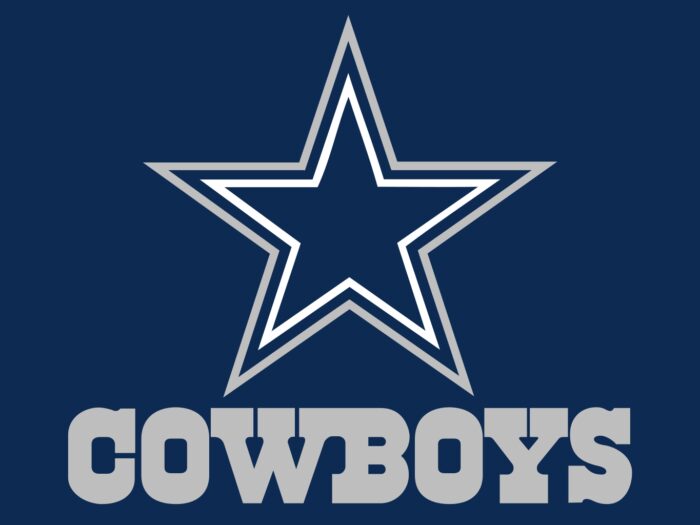Part 2 of the Diagnosing Toxic Leadership Series
My father was an unapologetic Chicago Bears fan. When my younger brother and I were old enough to start following football, he gave us a choice: “You can root for the Bears or You can pick any NFL team you want to root for.”
My baby brother chose the Pittsburgh Steelers. I picked the Dallas Cowboys.
Back then, the Cowboys were everything a young football fan could admire—tough, talented, and synonymous with winning. They had super star receivers, a legendary quarterback in Roger Staubach, and a cultural reputation for being disciplined and focused. The team was owned by H.R. “Bum” Bright, a leader who kept a relatively low profile, allowing football people to make football decisions. Under his leadership, the Cowboys had a trusted identity built on consistency, trust and winning.
Then things changed.
The Era of Jerry Jones
In 1989, the team was sold to Jerry Jones, an ambitious and unorthodox billionaire businessman. Unlike typical NFL owners who remain behind the scenes, Jones was not only the owner, but he appointed himself president and general manager. This placed him at the center of every major football decision—from contracts and trades to coaching hires and draft picks. The first crack in the foundation of trust.
What followed was a shift that still reverberates today. While the Cowboys initially found success under Jones’ ownership in the 1990s, the team’s long-term trajectory has suffered a legacy of stalled potential and fractured trust.
The Micromanaging Leadership Style:
Jerry Jones’ leadership is a classic case of executive micromanagement, characterized by:
Total control of football operations (coaching hires, player trades, contracts, decisions)
– Public involvement in team game strategy and personnel (often through press conferences, media leaks)
– Resistance to delegation (rarely empowering general managers with true autonomy)
– High brand visibility (often positioning himself as the franchise’s face)
This level of control might work in business, it’s problematic in a complex, interdependent system like an NFL franchise, where trust, expertise, and distributed leadership are critical.
Micromanaging Leaders Damages Organizational Trust
Over the years, Jerry Jones’ micromanaging leadership style has created an environment in which trust has eroded, here’s how:
– Disempowerment of Leadership Roles: Former head coaches and front-office staff have openly described being second-guessed, undermined, or overridden. When leaders skip middle management to give direction, leadership becomes symbolic rather than empowered, morale suffers—and trust erodes quickly.
– Ego Over Excellence: By constantly putting himself at the center of the Cowboys brand, Jones often redirects the spotlight away from coaches and staff. When leaders assume control of key function operations this undermines the expertise of those hired to execute strategy and it destroys team chemistry. This is a powerful ingredient in creating a toxic team culture.
– Lack of Accountability: When one person controls all decisions, shared accountability disappears, staff will feel helpless, leading to cynicism and disengagement.
– Cultural Instability: When these elements exist organizations will see high turnover of key staff, which leads to inconsistent messaging and shifting priorities. This unpredictability chips away at confidence and trust.
Micromanagement is a Trust-Destroyer
Micromanaging leaders may not set out to undermine trust, but the anxiety they experience when they relinquish control often overwhelms their willingness to operate at the appropriate leadership level.
How micromanaging leaders erode trust by:
- Surveillance disguised as support: Excessive check-ins, tracking and over documentation of every move
- Inconsistent feedback: Shifting expectations or moving goalposts, also known as gaslighting
- Withholding authority: Never allowing full ownership of work
- Public correction: Undermining team members in front of others
- Rework and overrides: Refusing to accept others’ decisions or deliverables
Over time, employees stop trying. Innovation declines. Engagement plummets. Worst of all, the team stops believing in the leader.
What Trust Looks Like in Healthy Teams
In high-functioning teams, trust means:
- Leaders give autonomy and space to contribute
- Team members feel safe making decisions
- Accountability is mutual—not top-down
- Mistakes are treated as learning opportunities, not personal failures
Trust is the invisible glue that allows teams to take risks, collaborate authentically, and grow.
The Long-Term Impact on teams
I have used the Cowboys as the gold standard for NFL franchises, but this can be true of any team or organization. Despite being one the most valuable brands in professional sports:
– The Cowboys have not returned to a Super Bowl in 30 years
– Players have quietly expressed frustration with leadership
– Fans like me have watched a once-great legacy wither under the micromanagement of one leaders need for control.
This decline isn’t about a lack of talent—it’s about the slow erosion of culture, vision, and organizational trust.
Clinical Insight
As a fan I have to admit that the leadership of my favorite team exhibits patterns that align with key traits discussed in the book “Diagnosing Toxic Leadership”.
– Obsessive-Compulsive Personality traits (OCPD): Rigid control, aversion to delegation, and fixation on “doing things right” their way.
– Narcissistic traits: High visibility, centrality of self, difficulty sharing credit
– Paranoid tendencies: Distrust of others’ decision-making, need to monitor every interaction, behaviors that destroy organizations.
These may or may not be clinical diagnoses, but they are recognizable behaviors that undermine organizational health.
Shifting from Micromanagement to Empowerment
When I chose the Cowboys as a child, it was because I liked the STAR,  and the players were having fun winning. As I got older, I admired the Cowboy culture, swag, professionalism, and unity. But over the past two decades, I’ve watched that vision disappear, not because of poor players or bad luck, but because leadership became ego driven. The story of Jerry Jones and the Cowboys isn’t just about football. It’s about any organization when one person’s need for control outpaces the organization’s need for trust. A lesson every leader, on or off the field, should take seriously.
and the players were having fun winning. As I got older, I admired the Cowboy culture, swag, professionalism, and unity. But over the past two decades, I’ve watched that vision disappear, not because of poor players or bad luck, but because leadership became ego driven. The story of Jerry Jones and the Cowboys isn’t just about football. It’s about any organization when one person’s need for control outpaces the organization’s need for trust. A lesson every leader, on or off the field, should take seriously.
Micromanaging leadership is real and toxic. If you’re committed to building healthier leadership cultures, start the conversation in your organization today. Host a workshop that helps leaders build trust and strengthen their teams. Click here to schedule a free 30-minute discovery call with me.

About Dr. Ollie G. Barnes III
Dr. Ollie G. Barnes III is an organizational performance consultant, keynote speaker, and author of Diagnosing Toxic Leadership: Understanding the Connection Between Personality Disorders and Toxic Leader Behaviors. As the founder of Impact Performance Consultants, he brings over 25 years of experience helping organizations transform workplace culture, improve leadership effectiveness, and build psychologically safe environments. Learn more at ImpactPerformanceConsultants.com

